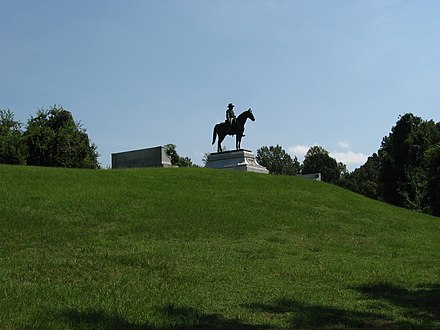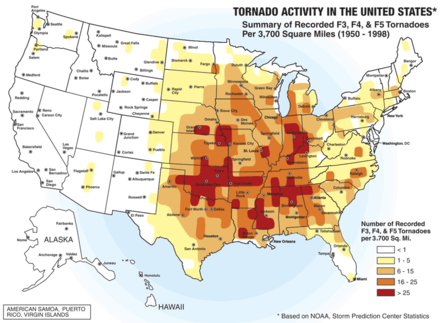Mississippi River - largest river system in North America
The Mississippi River runs 2,320 miles (3,730 km) south from Lake Itasca in Minnesota to Plaquemines Parish, New Orleans, Louisiana, drawing a wide, tangled and twisted dividing line cleaving the continental United States of America almost into two.
Understand
 The Mississippi has a long-established place in US history, which spans years of slavery and hardship, civil war, the mechanisation of the steam era and the rush to extend colonisation westward.
The Mississippi has a long-established place in US history, which spans years of slavery and hardship, civil war, the mechanisation of the steam era and the rush to extend colonisation westward.
At the time of US secession from the British Empire, the Treaty of Paris (1783) defined the river to be the western boundary of the nascent United States; conflicts with Spanish interests over control of river navigation continued after US independence. For years before the advent of motorised road and rail travel, the river was a vital transport route in the south and the west.
In the era of slavery and the Underground Railroad, being "sold down the river" by a master was bad news; the further one descended the Mississippi into Confederate territory, the worse conditions became. Literary travel will recognise the Mississippi from Hannibal southward as the route of Mark Twain's "Huckleberry Finn" fleeing the fictional river town of "St. Petersburg", intending to help the enslaved Jim get to freedom via the Ohio River (the largest tributary of the Mississippi by water flow), but ending up in New Orleans. In 1863, during the US Civil War, a 47-day siege at Vicksburg was key to establishing Union control over Mississippi River shipping.
Historically, to the west of the Mississippi lay vast native or otherwise-unexplored territory of the Wild West while to the east lay the established Colonies. Route 66, the once-famed historic road to the west and the California dream, crosses the Mississippi at the boundary between East St. Louis, Illinois and St. Louis, Missouri. The theme of Mississippi as nationwide dividing line continues to appear in various contexts; St. Louis proudly displays a Gateway Arch as the "gateway to the West", US broadcast stations identify with few exceptions by using K--- callsigns west of the Mississippi River and W--- callsigns to the east and the river as dividing line appears in many boasts of "the (oldest, biggest, best, greatest) X west of the Mississippi".
In 1930, in the depths of the Great Depression, the US Army Corps of Engineers began construction of a series of locks and dams which ultimately extended the head of navigation on the Mississippi northward to the Twin Cities. Improved infrastructure opened tributaries such as the Illinois Waterway (to Chicago and the Great Lakes) and the Missouri River (the longest Mississippi tributary, and the only river in the continental US to be longer than the Mississippi itself) to unimpeded navigation. Vessels ranging from paddlewheel steamboats to huge river barges remain an integral part of the river's history. New Orleans, an "impossible city in an inevitable location", owes its existence largely to its role as seaport at the terminus of the Mississippi.
Prepare
 This route is entirely within the United States of America. As this itinerary covers more than two thousand miles of the Midwest and South from the frigid Minnesota wilderness to the tropical hurricanes of New Orleans, across everything from huge crime-ridden cities to open parkland, the voyager must be prepared for a wide range of conditions almost as diverse as America itself.
This route is entirely within the United States of America. As this itinerary covers more than two thousand miles of the Midwest and South from the frigid Minnesota wilderness to the tropical hurricanes of New Orleans, across everything from huge crime-ridden cities to open parkland, the voyager must be prepared for a wide range of conditions almost as diverse as America itself.
Get in
The Mississippi River runs from north to south; the 2,320-mile-long river begins at Lake Itasca.
Itasca State Park is on US Route 71 in northern Minnesota; as the oldest and largest of Minnesota's state parks, it offers a classic northwoods experience with old growth forest, diverse wildlife, fishing and swimming on crystal-clear streams and lakes.
Navigable waters begin at Minneapolis-St. Paul; navigational charts are available for purchase or download from individual US Army Corps of Engineers districts.
While the only easy way to Lake Itasca is by car, those starting the journey in the Twin Cities have additional options:
- By plane: Minneapolis-Saint Paul International Airport (IATA: MSP) is located 10 miles southeast of downtown Minneapolis.
- By train: Amtrak provides daily service to Union Depot in downtown Saint Paul.
- By bus: Greyhound and Jefferson Lines, Hawthorne Transportation Center, 950 Hawthorne Ave in downtown Minneapolis.
- By car: Interstate Highways 35W and 94 both connect to the I-494/694 beltway around the Twin Cities metro area.
Go
From Itasca State Park by road, take US 71 south to US 10. US 10 runs southeast through St. Cloud (Minnesota), continuing (with US 10 and I-94 following opposite banks of the Mississippi) to the Twin Cities of Minneapolis-St. Paul.
Upper Mississippi
Beyond Minneapolis-St. Paul, travel is possible by road or by water. The US Army Corps of Engineers Rock Island district operates a series of canal locks and dams along 800 miles from MSP to St. Louis. American Cruise Lines, Inc. operates paddlewheel cruise ships on much of the Mississippi system; additional boat tours are available in major cities and cruising on small craft is also an option.
By road, US 61 runs south from US 10 at Hastings (Minnesota), between St. Paul and the Prescott (Wisconsin) bridge. Continue southward on US 61 past La Crosse, Wisconsin (the river is the Minnesota-Wisconsin border here) and Dubuque (on Iowa's border with Wisconsin and Illinois) to the Quad Cities (which are divided, again, by a state line which follows the Mississippi).
From the Quad Cities, US 61 continues southward on the west side of the Mississippi through Hannibal to St. Louis, Missouri.
Memphis and Vicksburg
 By river, charts are available from the Vicksburg district of the US Army Corps of Engineers, which maintains various structures on the river to control flooding.
By river, charts are available from the Vicksburg district of the US Army Corps of Engineers, which maintains various structures on the river to control flooding.
By road, I-55 or US 61 continue south through Memphis, the most holy city for Elvis fan pilgrimage, on Tennessee's border with Arkansas (the state line is the Mississippi). Further south, the Mississippi is the state border between Arkansas and Greenville, Mississippi.
US 61 leads through the Mississippi Delta region, once famous for juke joints and blues. Riverboat casinos operate in multiple towns and states along the river.
New Orleans district
The river continues to meander on its twisted path southward to become the Louisiana-Mississippi border, then continues into Louisiana through the state capital Baton Rouge. The river terminates as a delta on the Gulf of Mexico beyond New Orleans.
A major seaport, New Orleans has an elaborate system of rivers, lakes, harbours and waterways.
Stay safe
 Weather in the Midwest can be unpredictable so, in the north, standard precautions regarding winter driving and ice safety apply. In the Gulf Coast region, hurricane safety is a concern; on the open plains (from Illinois and Iowa to Arkansas and Tennessee), tornado safety is not to be neglected. Flooding is also a hazard in many areas. Ticks and poison ivy may pose problems in parks, such as Cahokia Mounds in Illinois. In areas with large student or tourist populations, intoxicated persons may be an annoyance or a hazard. In rural areas, animal collisions pose a danger.
Weather in the Midwest can be unpredictable so, in the north, standard precautions regarding winter driving and ice safety apply. In the Gulf Coast region, hurricane safety is a concern; on the open plains (from Illinois and Iowa to Arkansas and Tennessee), tornado safety is not to be neglected. Flooding is also a hazard in many areas. Ticks and poison ivy may pose problems in parks, such as Cahokia Mounds in Illinois. In areas with large student or tourist populations, intoxicated persons may be an annoyance or a hazard. In rural areas, animal collisions pose a danger.
American alligators are quite common in the southern half or so of the river, up to southern Arkansas. They can grow to over ten or fifteen feet and weigh several hundred pounds, and are reason enough to steer clear of swimming in most of this half of the river.
Racial tensions and discrimination against LGBT travel may still be encountered in some areas in the South. Crime and theft are a problem in large populated areas. A few specific locations pose hazards in individual cities:
- In Memphis, the downtown is heavily policed but some areas in North and South Memphis are prone to crime.
- In Minneapolis be wary of the Near North, Camden, and Phillips communities, particularly at night - although thefts and violent crime may occur anywhere.
- In the Mississippi Delta region, poverty is widespread, crime rates are high even by regional standards and non-white visitors should be cautious and wary due to racial discrimination.
- In New Orleans, the poorest and most low-lying areas have not fully recovered from 2005's Hurricane Katrina. The Central City (not to be confused with the Central Business District) should be avoided by casual visitors and "Back of town" sections of the 7th, 8th and 9th Wards have serious problems. In the main tourist areas, expect to encounter many common scams, pickpockets and theft; be aware of your surroundings at all times.
- In the Quad Cities avoid travel on foot when alone at night, especially in the west ends of Davenport and Rock Island. The area's greatest dangers on the road are collisions with deer and icy winter driving.
- In St. Louis: the Illinois side of the city is best avoided at night (East St. Louis is as dangerous as the worst parts of Chicago). A few northern suburbs off the main tourist track (such as Ferguson, site of 2014 racial unrest after police killed a black man) are also dangerous; Wellston, Pagedale, parts of Normandy and Jennings, as well as many parts of North St. Louis city are an unsafe, impoverished zone of abandoned, decaying, or demolished buildings as a post-war exodus to the suburbs has taken a huge economic toll. The region is also at high risk for tornado damage.
See the individual destination articles for details.
Go next
Listed generally from upstream to downstream:
-
The Lincoln Highway, an itinerary from Clinton, Iowa.
-
The Lewis and Clark Trail, an itinerary from St. Louis.
-
Route 66 an itinerary from St. Louis.
-
Interstate 10/US Hwy 90, an itinerary and main east-west highway from Baton Rouge and New Orleans.
-
The Jazz Track, an itinerary, overlaps a portion of the Mississippi River tour from Memphis to New Orleans.
Saint John the Baptist Parish
2nd-order administrative division
Louisiana
Primary administrative division
United States
usa.govPopulation:327.2 MDial code:+1Currency:Dollar (USD)Voltage:120 V, 240 V, 60 HzNEMA 14-30NEMA 14-50